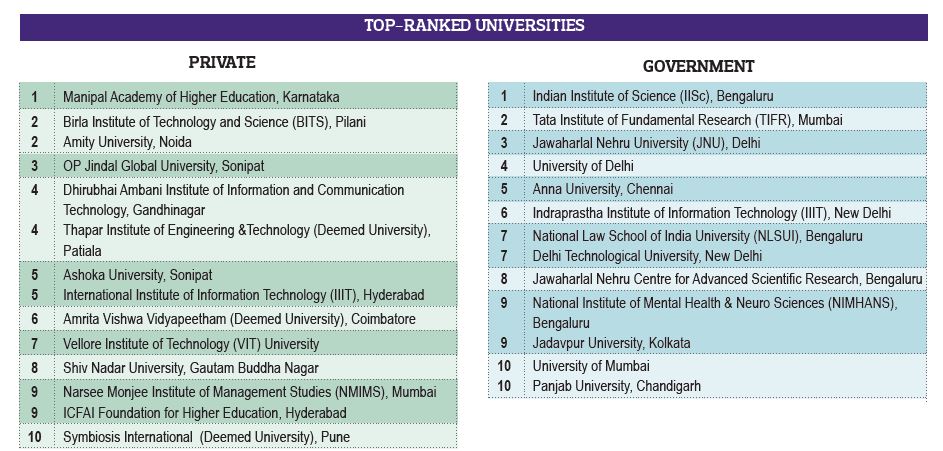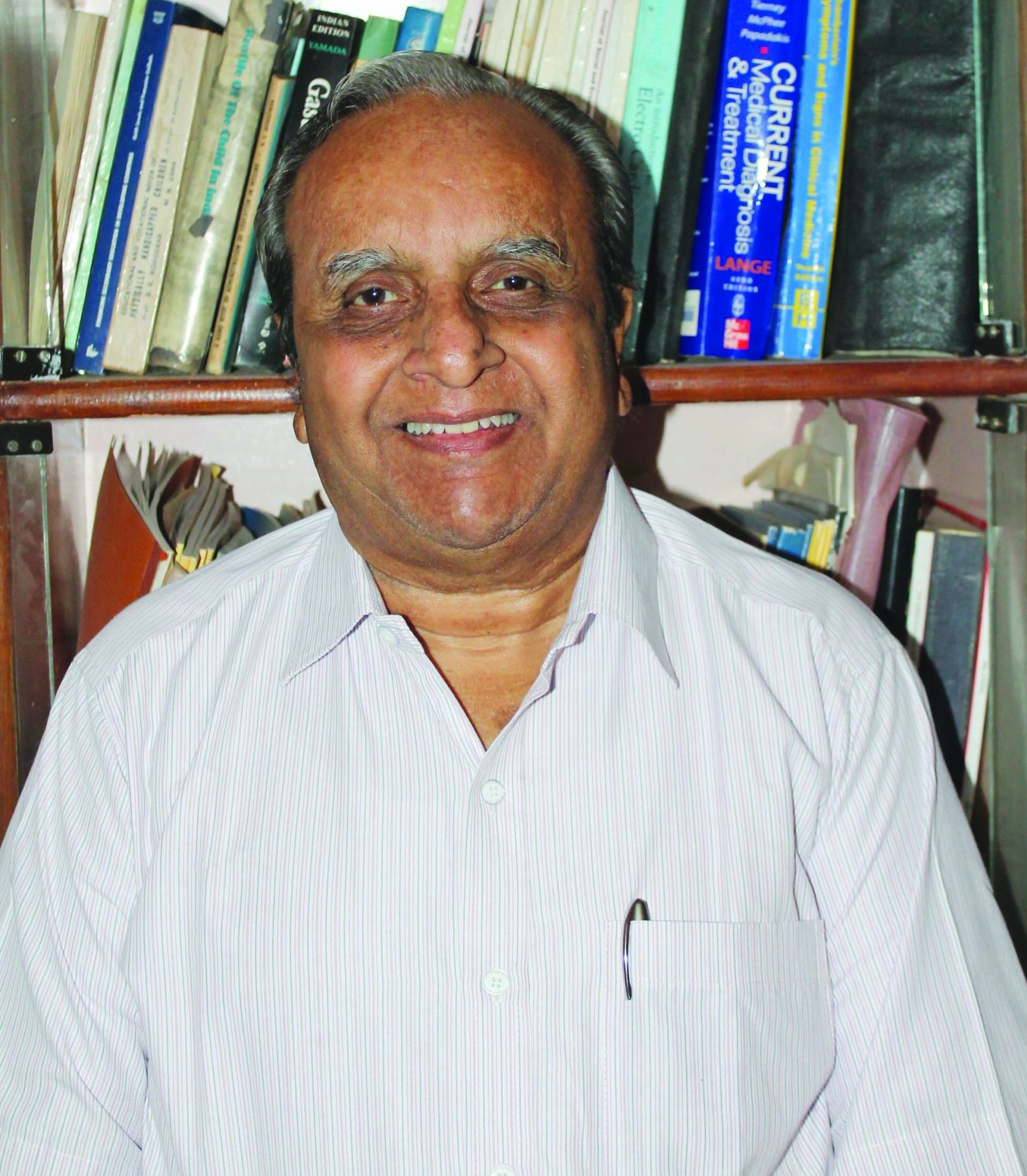The separate private and public universities league tables will aid and enable school and college leavers to select higher education institutions best in sync with their budgets, aptitudes and aspirations-Dilip Thakore
Post-Independence India’s higher education system tightly regulated by the Central and state governments has proved to be a big disappointment. Although some of the country’s universities are of more than 150 years vintage — Bombay, Calcutta and Madras universities were established in 1857 — until very recently, none of India’s 979 universities has ever been ranked among the Top 200 WUR (World University Rankings) league tables published annually by the globally respected London-based higher ed rating agencies Quacquarelli Symonds (QS) and Times Higher Education (THE).
In the latest WUR 2021 published by QS, the only Indian universities ranked among the Top 200 are the IIT Bombay (estb.1958) ranked #172, followed by the Indian Institute of Science, Bengaluru (estb. 1909) at #185 and IIT-Delhi (estb.1961) #193. Humiliatingly, seven varsities of the neighbouring People’s Republic of China (PRC) are ranked among the QS Top 200 with four in the Top 50.
In the THE 2021 league table, not even one Indian university is ranked in the Top 200. India’s showpiece IISc, Bengaluru is ranked in the 301-50 range. On the other hand, the THE Top 200 league table includes seven PRC universities with Tsinghua ranked #20 and Peking University at #23. Quite clearly, in the global race of academic excellence, India’s higher education system which includes 39,931 undergrad colleges, 10,725 standalone institutions and 979 universities with an aggregate enrolment of 37 million youth, is an embarrassing also-ran.
The prime cause of this embarrassing status is that the country’s higher education institutions (HEIs) rigidly controlled by the Delhi-based University Grants Commission (UGC) and All India Council for Technical Education (AICTE) are over-regulated, allowing them little elbow room for autonomy and innovation. UGC licenses and heavily subsidises all 54 Central government universities, provides ad hoc grants to state government universities and prescribes the syllabuses of all arts, science and commerce HEIs countrywide. AICTE licences all engineering and technical HEIs across the country including B-schools and pharmacy colleges, but excluding medical and law colleges which are subject to licensing and supervision of the Medical Council of India and the Bar Council of India.
In turn these supervisory and regulatory institutions are tightly controlled by the Union education (formerly HRD) ministry. Thus for over seven decades higher education has been over-regulated by the neta-babu (politician-bureaucrat) brotherhood. Of the country’s 39,931 undergrad colleges, a mere 827 have been awarded limited autonomy.
In sum the vast majority of HEIs are being micro-managed by generalist bureaucrats of the Union education ministry and their hand-picked appointees in an alphabet soup of regulatory agencies — UGC, NCTE, AICTE, MCI, NBA among others. The much-prized autonomous status conferred on 827 colleges is restricted to academic freedom. In the matter of introducing new study programmes and levying tuition fees, even autonomous colleges are obliged to obtain sanctions and clearances from affiliating universities, and the state if not Central government.
At the university level, even if high-performing private universities are awarded full autonomy by UGC, they are not permitted to describe themselves as universities simpliciter. In all advertising and printed material, they must introduce themselves as ‘deemed-to-be’ universities. Secondly, unlike government/public universities they are not permitted to affiliate undergrad colleges. It is this communist-style reluctance of the State to leave academics to manage even the best institutions of higher education that is the root cause of the also-ran status of contemporary India’s HEIs in the QS, THE and other WUR league tables.

Curiously the great majority within post-independence India’s HEIs don’t seem to mind State control of the academy even though there is a consensus within the academy that pervasive government control has ruined the country’s high-potential higher education system. This is because communists, leftists and socialists —who accept State control of education as normative and inevitable — massively infiltrated the academy in the immediate years after independence and almost completely supressed liberal academics in favour of private enterprise and free market ideologies.
This silent conquest of the Indian academy by confused Left academics ignorant of the historical reality that for over five millennia until almost two centuries of the British Raj, the Indian subcontinent with its free trade and free markets contributed 20 percent of global GDP, was enabled by independent India’s first prime minister Jawaharlal Nehru and the Congress party who were inspired by Sovietstyle socialism which has since gone bust worldwide. In the event, academics lost their status as independent intellectuals and became mere employees of the State and acquiesced to the loss of academic autonomy. The outcome is the pathetic rankings of India’s HEIs in global WURs.
Against this depressing backdrop the promotion of a substantial and growing number of private universities established under special state governments legislation — education is in the concurrent list of the Constitution with the Central and state governments empowered to enact legislation — offer the prospect of a renaissance of India’s compromised higher education system. In the new millennium, a spate of new genre private varsities — Amity, O.P Jindal Global, Ahmedabad, Ashoka, Shiv Nadar, B.M.L Munjal, Bennett and Krea universities — promoted by enlightened industry and business leaders have sprung up across the country.

“The emergence of globally benchmarked private universities in the new millennium is a very positive development for Indian education. For one, they are not a burden on taxpayers. Secondly, their relatively high tuition fees motivate students to study diligently to get a return on investment, unlike government HEIs where the majority of students who pay nominal fees tend to have a frivolous attitude towards academic education. Moreover, managements and faculty of private universities are more accountable to their promoters and parents communities than of impersonal government-funded HEIs. The opposition of Left intellectuals to private HEIs is because they are not obliged to reserve quotas for SCs and STs (scheduled castes and scheduled tribes). My advice to private universities is to provide full scholarships to SC and ST students who pass their entrance exams. This will win them full acceptance,” says Dr. A. S. Seetharamu,former professor of education at the Institute of Social & Economic Change (ISEC), Bengaluru and currently education adviser to the Karnataka state government.
Quite clearly new genre capital-intensive, globally benchmarked private universities, whose promoters have tapped the Indian diaspora and the world for highly-experienced professional faculty, offer hope of radical upgradation and revival of India’s crumbling higher education system. With their rigorous undergrad programmes and continuous research and innovation philosophies, for the first time in the history of Indian academia, they offer school and junior college leavers high-quality globally comparable undergrad, postgrad and professional education at a fraction of the price tags of Western and Commonwealth universities.
Hence the decision of your editors to rank the country’s best private and public universities separately. We believe that our league tables will aid and enable school and college leavers to select HEIs best in sync with their budgets, aptitudes and aspirations.























